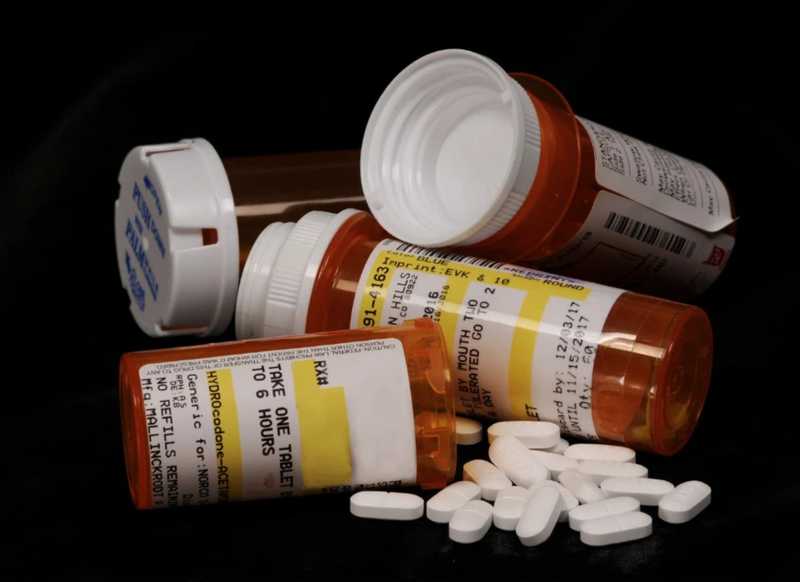The Opioid Epidemic
Over the next ten years, over 500,000 Americans will die of an opioid overdose. Today, opioid overdoses kill more Americans annually under the age of 50 than guns or traffic accidents. In the ’90s the opioid crisis was nascent, and prescribers and doctors assured patients that opioids were not addictive. At that time, even with a lack of data, pharmaceutical companies aggressively marketed the use of opioids for ‘non-cancer related pain’.
Today, chronic pain is the primary indication for opioid prescriptions. As the epidemic has grown, the CDC has responded by issuing guidelines for opioid prescribing, saying that, “ non-opioid treatments are the preferred first step for treatment of chronic pain. Opioid medications should only be added after careful assessment of pain control and followed by regular evaluations of their continued need.” Some alternatives to opioids are over-the-counter medicine such as ibuprofen (Motrin), acetaminophen (Tylenol), aspirin (Bayer), and steroids. Beyond these conventional alternatives, some people find success with physical therapy, acupuncture, surgery or injections and nerve blocks.
FOLLOW US ON FACEBOOK & INSTAGRAM
Addiction to Opioids
Even with the alarming statistics, millions of prescriptions for opioids are written every year, contributing to widespread addiction and, in some instances, overdose. Taking opioids for any length of time comes with the risk of addiction as they trigger the release of endorphins and dopamine, your brain’s transmitter for your feel-good neurotransmitters. Through this process, your overall perception of pain is decreased yet, the longer you take opioids, the more you need to recreate this sense of well-being. Once opioid addiction occurs, the brain becomes altered and begins to function normally when the drug is present and abnormally when the drug is removed. As use is prolonged, a person generally will:
- Increase in the overall amount of opioids consumed
- Be unsuccessful in attempts to control consumption
- Have cravings and increased desire to consume
- May not feel “normal” when not on the drug
- Continue use despite social problems and interruption of work
Medications currently used within the United States for opioid treatment are buprenorphine, methadone, and extended-release naltrexone
What is Ibogaine
Ibogaine is a psychoactive substance that has shown great potential in interrupting patterns of addiction with opioids, alcohol, and methadone, among other substances. Ibogaine is found within iboga, a West African plant, and is a member of the Apocynaceae family. Ibogaine has been used in traditional healing ceremonies and rituals for centuries by indigenous tribes.
RELATED: CAN PSILOCYBIN REPLACE TRADITIONAL PHARMACEUTICALS FOR DEPRESSION & ANXIETY
Ibogaine as a Treatment for Opioid Addiction
In larger doses ibogaine has proven effective in helping people manage withdrawal from opioids, helping to eliminate opioid-related cravings temporarily. As a psychedelic, it also works at a deeper level, helping people to look at their lives through a different lens and approach their addiction with a sense of reflection. Patients typically experience relief from withdrawal and addiction after one or two doses. Small traces of ibogaine remain in the body for months after the initial treatment, which may also stave off cravings.
Although lacking in clinical trial data, initial observational studies on ibogaine seem promising. Two studies conducted by MAPS in Mexico and New Zealand found significant long-term reduction of withdrawal symptoms in 20% and 50% of participants, respectively. Research indicates greater success when ibogaine is combined with psychotherapy following treatment. Johns Hopkins School of Medicine conducted a study that indicated ibogaine was able to reduce opioid use withdrawal symptoms in 80% of participants. 30% of the participants noted longer-term effects and abstinence from opioid consumption.
But, is ibogaine more effective than more standard treatments? One 2004 ibogaine study conducted at the Sunshine Coast clinic in British Columbia indicates it may well be. In this study, 20 participants were given ibogaine, and of that 20, 13 were found to be abstaining from opioid use after an average of six months. That study puts the success rate at 65%, whereas more conventional treatment programs find an average of 10% success in abstinence.
Is Ibogaine Safe?
According to Global Ibogaine, between 1990 and 2008 there were 19 deaths “temporally associated with the ingestion of ibogaine.” Safety concerns to be considered before treatment with ibogaine are as follows:
History of heart conditions including cardiac arrest, congenital defects, deep vein thrombosis, or irregular heart rhythms. A history of psychiatric conditions Impaired liver or kidneys If a person is actively in withdrawal with alcohol or benzodiazepines If a person is consuming opiates at the time of treatment If a person continues substance abuse immediately after treatment, the possibility of overdose is higher
Legal Status
Ibogaine has been illegal in the US since 1967, and is currently classified as Schedule 1 drug. Within the European Union it is scheduled in 9 countries, and in much of the world, it is mostly unregulated. Ibogaine is currently legal in Australia, Brazil, Gabon, Canada, Guatemala, Mexico, The Netherlands, New Zealand, and South Africa.
Photo Credit: K State Research & Extension
